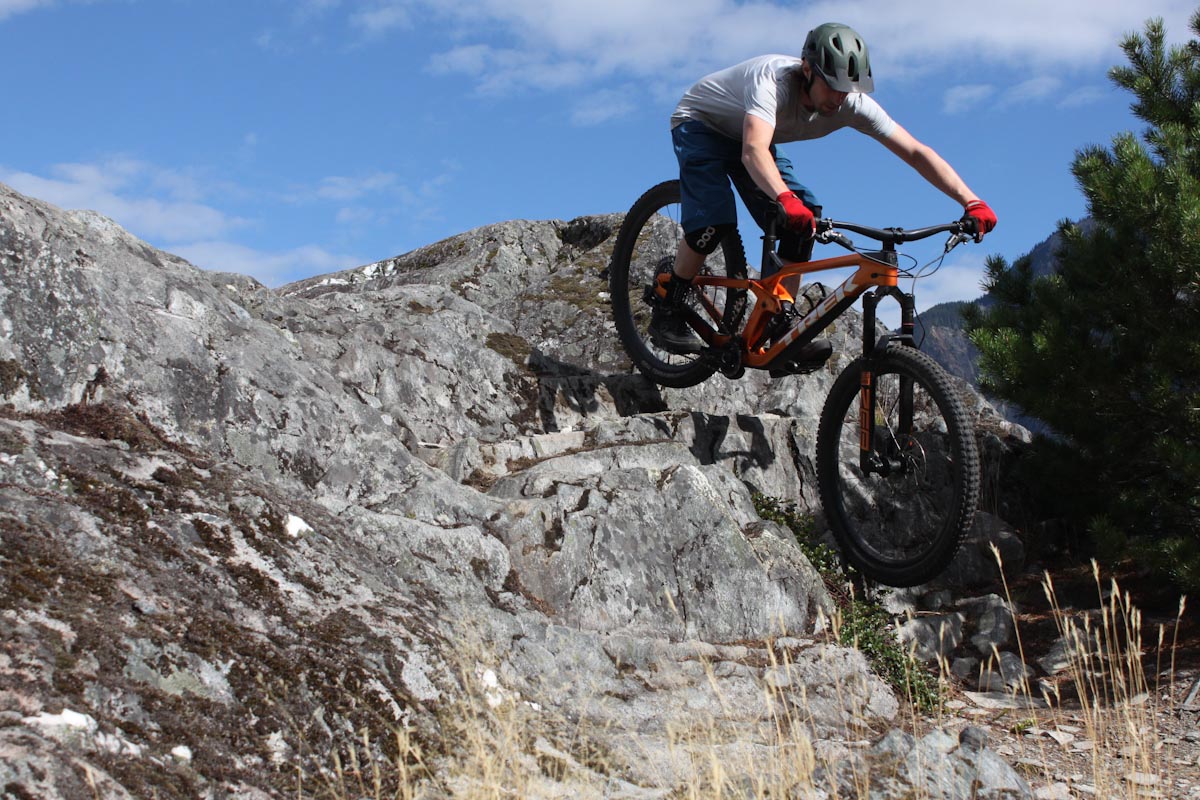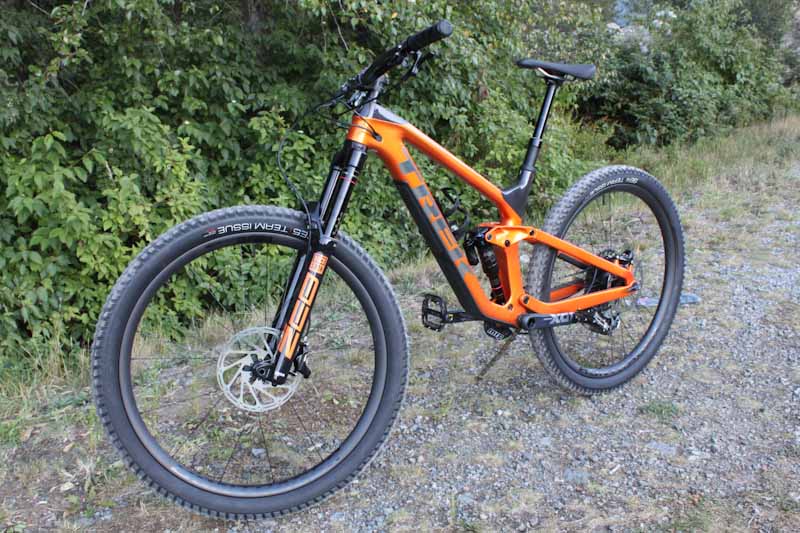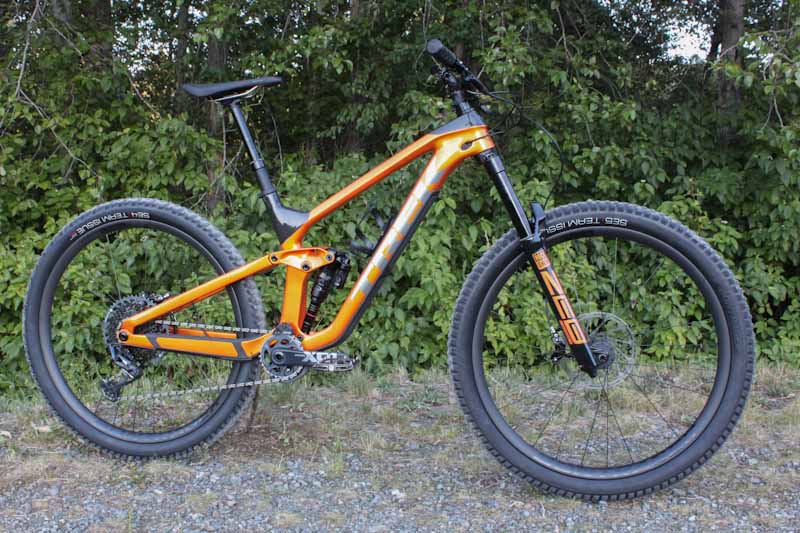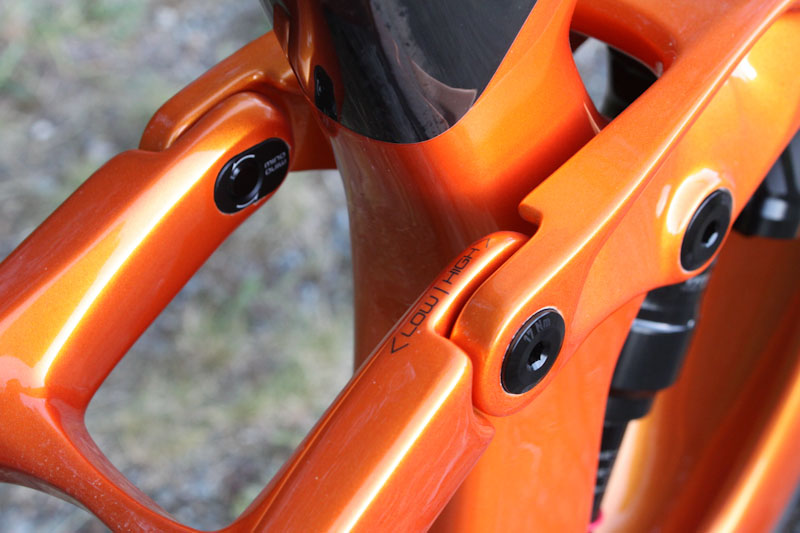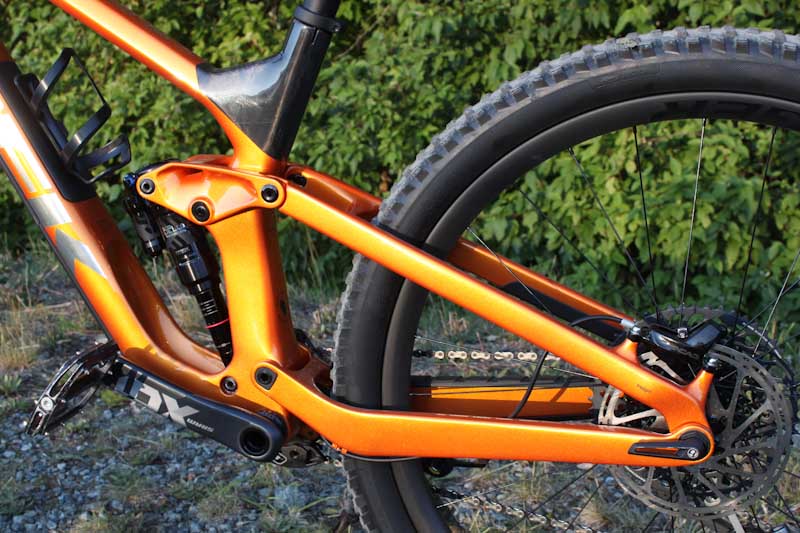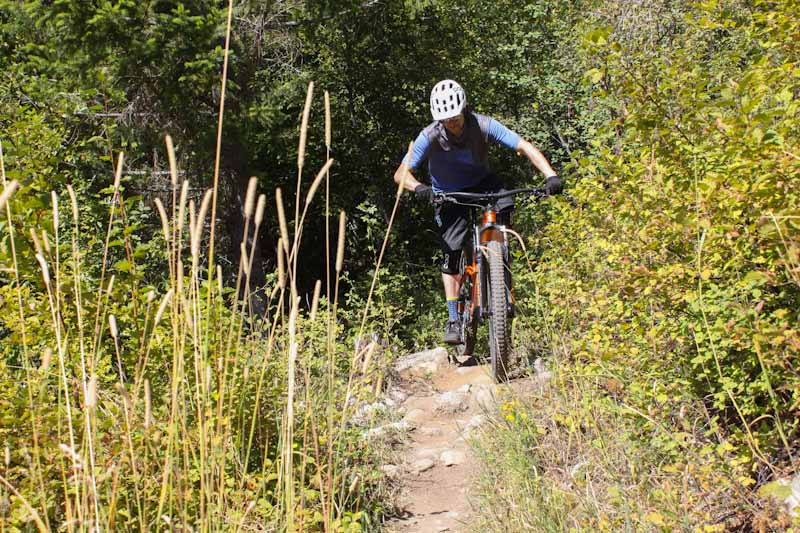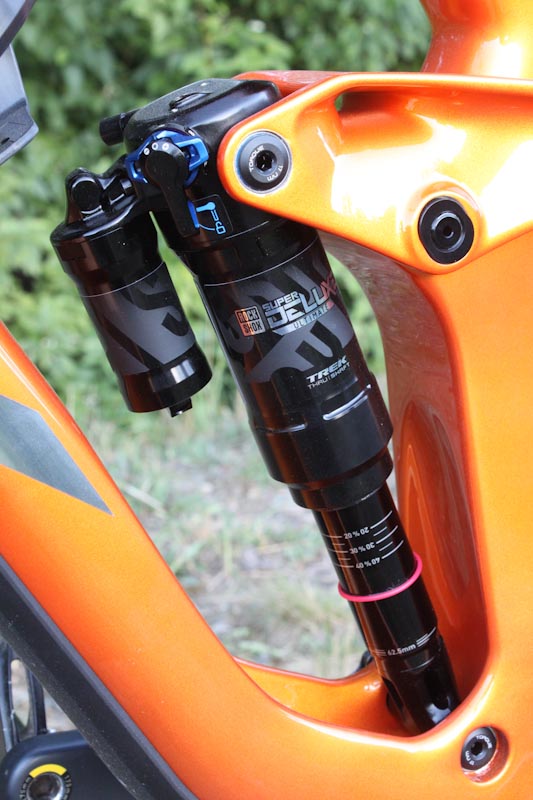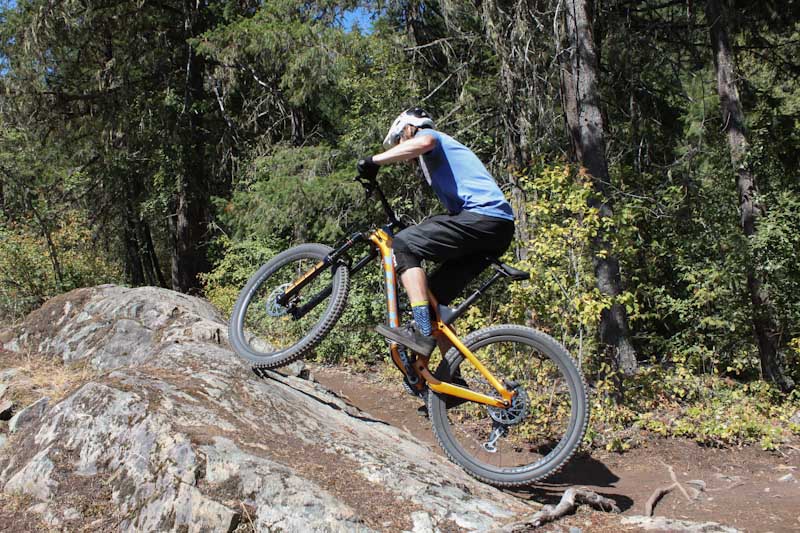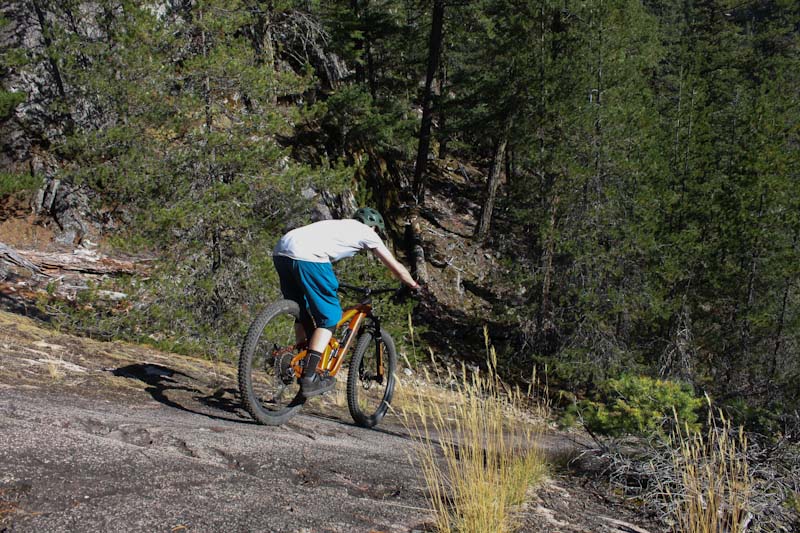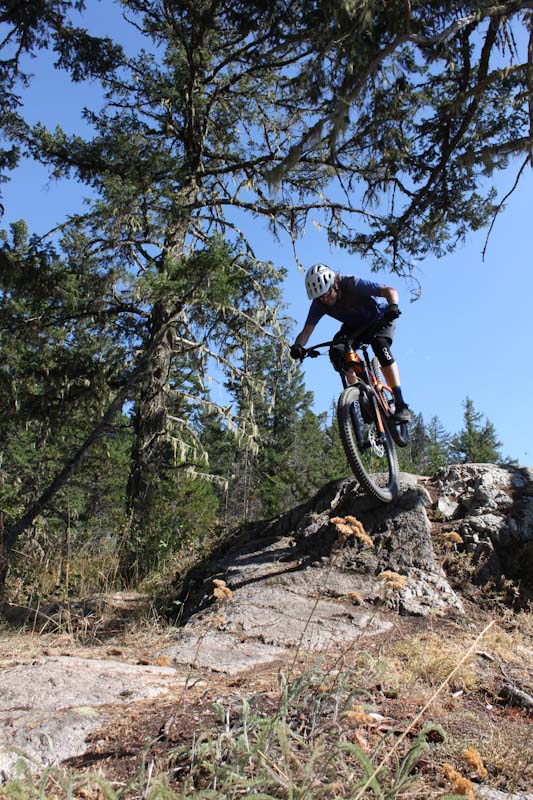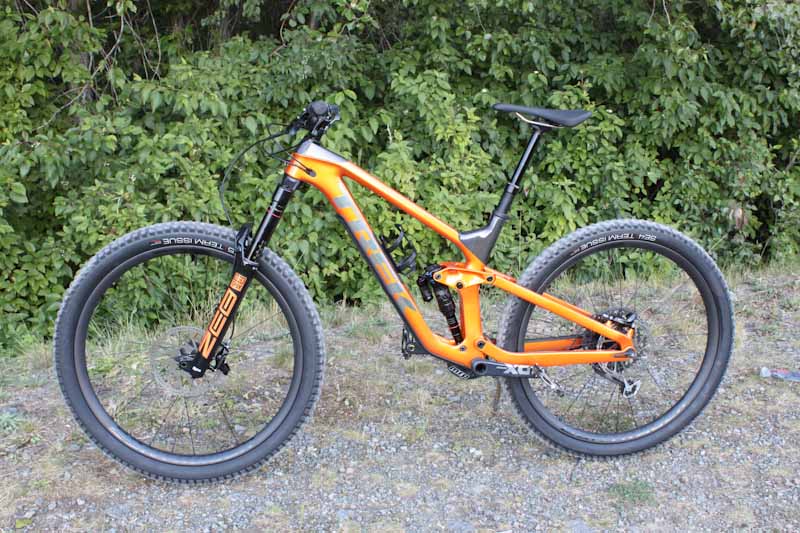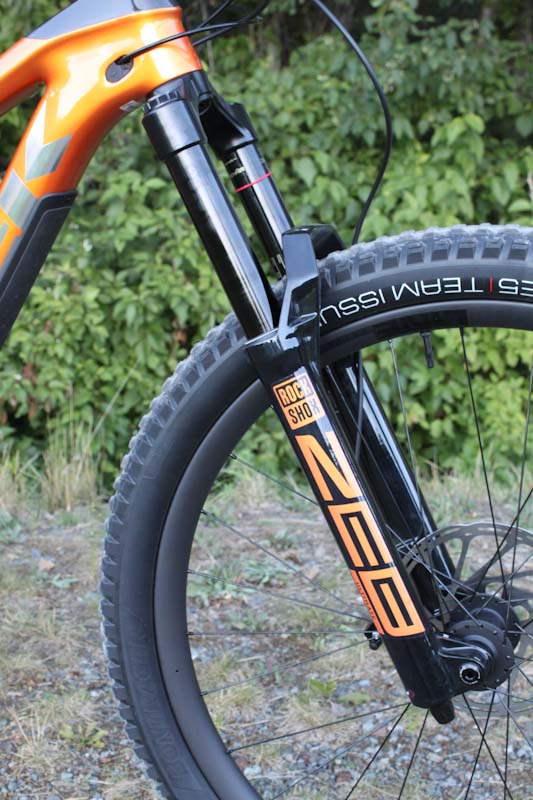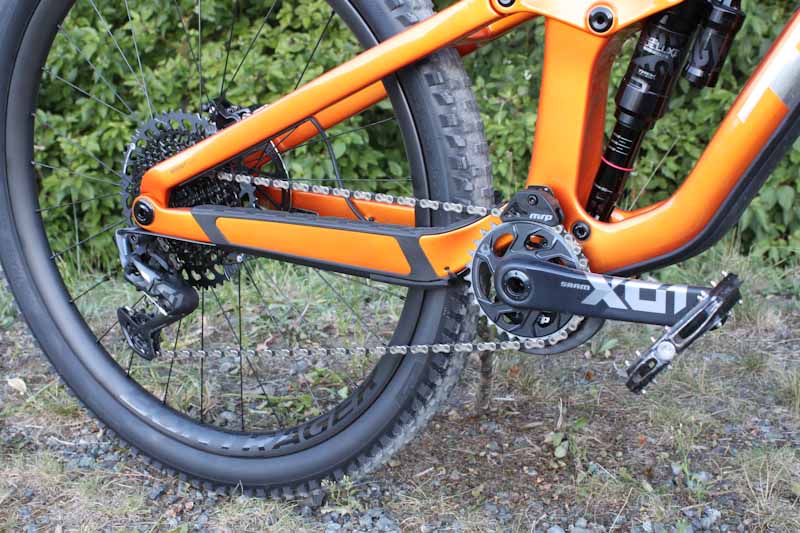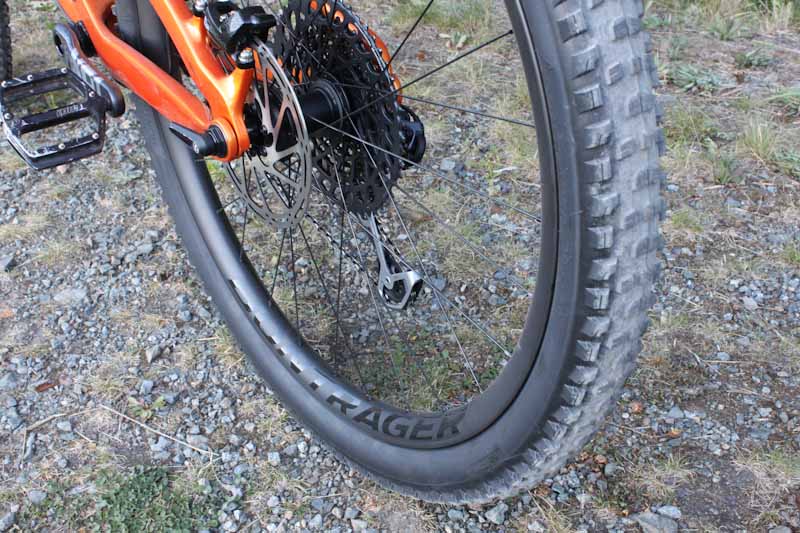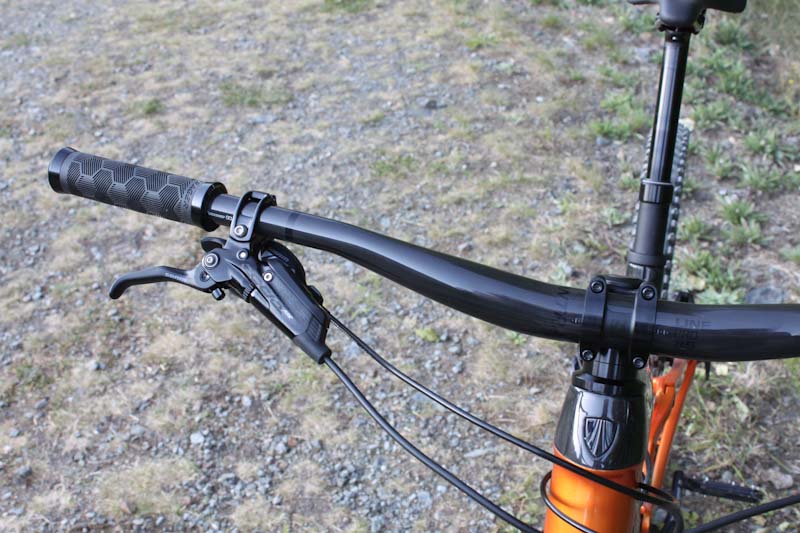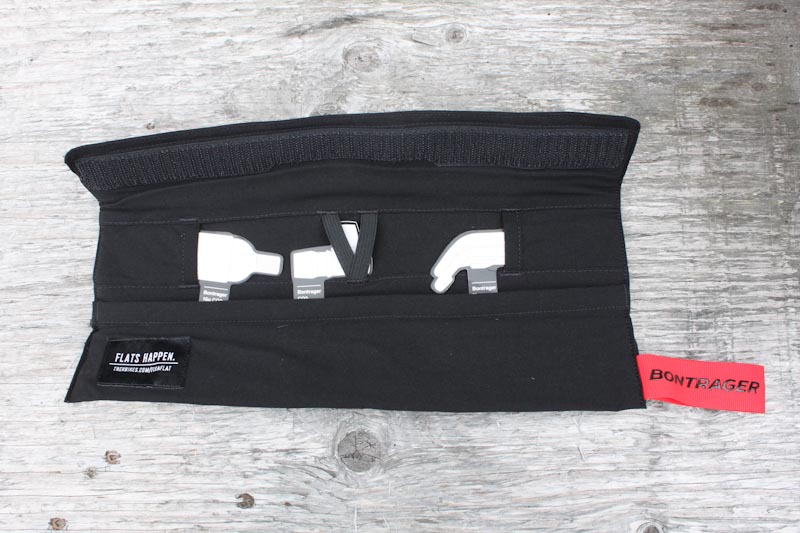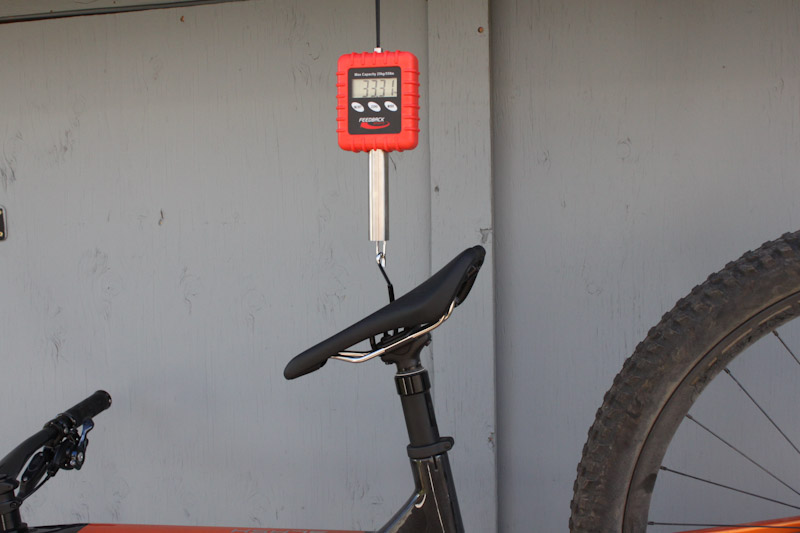It’s hardly a secret now, but long travel 29ers are the bee’s knees for thrashing rough trails! Trek’s Slash has lived in this category for a while now, but for 2021 it’s grown into a bigger beast. Now offering 160/170mm travel, a custom tuned rear shock, a revised linkage and updated geometry, the 2021 Slash is ready to tackle the rowdiest trails you can ride.
I got the chance to hop on a Slash 9.9 X01. This isn’t the top-end model but it’s close, offering a carbon frame, RockShox’s new Zeb fork, Bontrager carbon wheels, and a SRAM X01 drivetrain. This article covers my ride impressions of the bike, but check out my launch article to see what’s changed on the 2021 Slash, and to get a peek at the whole model lineup.
One coincidence popped up that makes this review particularly fun for me: Trek told me before the pandemic hit they had planned to host the Slash’s launch event right where I live in Pemberton, B.C! It’s unfortunate the event didn’t go off, but I guess you Bikerumor readers get to hear how the bike handles the exact terrain Trek wanted to demonstrate the new Slash on! Like many areas of B.C., this is long travel territory and the Slash is certainly a suitable rig.
Geometry and Fit:
The 2021 Slash definitely has that ‘big enduro’ character when it’s on the trail, yet Trek hasn’t gone crazy with any of their geometry or measurements. The Slash’s new reach of 450mm suits me well. At 5’9” I always ride Medium frames, and after riding reaches varying from 440-475mm I think 450mm is pretty ideal. The front end is long enough to put me in a well-balanced position, but not so long that I’m leaning over the bike like an XC racer or sacrificing a comfortable bend in my elbows.
Out back, the chainstays are not too short or too long at 437mm. The Slash is no whippy, mid travel trail bike, but it’s still not hard to get the front wheel up. That said, it’s stability at speed is excellent, rivaling big bikes like the Rocky Mountain Slayer or Knolly Warden LT.
Given my local terrain and this bike’s emphasis on crushing descents, I rode the Slash in the Low setting, as I suspect most buyers would. Initially I thought the Slash’s head tube was slacker than its actual angle of 64.1°. It feels like a very slack bike, yet I still have no trouble climbing through tight switchbacks with it. Maybe I’m just getting used to long travel 29ers, but it is surprising how little a slack head tube hampers technical climbing. On the downs, the slackness gives this bike DH-like handling and really helps you tackle steep stuff.
The 75.6° seat tube angle keeps your body weight in a nicely balanced position, so I hardly ever stood up to climb on the Slash. Even on steep uphill pitches, enough of my weight stayed on the front wheel to keep it planted without me having to make intentional moves to keep it in the dirt.
The Slash does have a fairly low BB but I only tagged a few pedals on some low lying roots and rocks. When you point it downhill, that low BB translates into a ton of stability.
Suspension/Ride:
As the owner of a Remedy, I am quite familiar with Trek’s ABP suspension linkage. I find this linkage does a great job at both its opposite duties: very efficient pedaling and supple bump absorption. The Slash is only helped in both regards by its 29” wheels and beefy 2.6”/2.4” tires.
Climbing:
On my first ride, I left the Slash’s RockShox Super Deluxe Ultimate Thru-Shaft shock in wide open mode to see how the bike pedaled without the shock stepping in. For 2021, Trek altered the position of the main pivot to enhance the Slash’s pedaling efficiency, and it does handle its 160mm’s of travel very well. Right away I was impressed with how easily the Slash was moving along, so I left it wide open for a full lap of technical singletrack trails. Usually if a shock has a pedal switch I’m in favour of using it, but this bike makes that more of a choice than a requirement.
I then tried the shock’s pedal mode, and it is quite firm. Riding technical singletrack, the rocks and roots become very noticeable as the shock resists these smaller, low speed impacts. When you force it with a harder hit, the rear shock will still give in and dive fairly deep in pedal mode. There is a noticeably stiffer feel at the cranks, so using the pedal mode definitely aids the bike’s efficiency. However, the Slash doesn’t lose much of that pedaling prowess when you leave it wide open…
If you live in an area rife with technical singletrack and not much road riding, you could spend 95% of your time with the Slash’s rear shock open. I’d reserve the pedal mode for fairly smooth surfaces, as you’ll appreciate the open mode’s ride comfort and rear wheel traction when you’re climbing anything rough. With a marginal loss in pedal power the Slash’s rear wheel comes alive, sticking to the trail and absorbing uphill bumps very well.
The Super Deluxe Ultimate Thru-Shaft shock also offers a three position open mode adjustment. It has a middle ‘zero’ setting, a plus (firms up the low speed compression), and a minus (reduces the low speed compression). I did two back-to-back loops to see how the plus and minus settings differed while climbing bumpy trails. In the plus setting, the bumps were noticeable and the bike rode over them more than plowed through them. Pedaling support was very good considering the shock is still within its open mode range (the actual pedal mode is far stiffer yet).
When I switched to the minus setting, I did find the bumps were absorbed much more readily and softly, and there was a slight decrease in pedaling efficiency. There is that middle setting too, so you can really fine-tune the Slash’s ride; I focused on comparing the plus and minus settings, and I did find a discernible difference between them.
My big take away from testing the open mode adjustment was this; If you’re climbing technical terrain with the Slash, the open/plus position might be ideal – It’s almost like going a third of the way to the much stiffer pedal mode.
Descending:
The thing I like most about Trek’s linkage is how well it seems to round off big, sharp impacts. I’m happy with how well my Remedy does this, but the Slash is much better! The two bikes offer similar ride characteristics, but with 10mm’s more squish and bigger wheels (my Remedy is 27.5”), the Slash easily defeats the Remedy when the going gets rough.
As a lighter weight rider, I was happy to find I had no problem getting full travel from the Slash without any shock tuning. Generally progressivity is something enduro bikes emphasize, but I found the Slash’s rear end was quite willing to dive all the way for me. It offers enough ramp-up that I wasn’t bottoming out on casual rides, but when pushed harder the Slash was happy to give me every millimeter it had. It should be noted that the bike comes stock with no volume spacers in the shock, but they can be added to the positive and negative chambers if desired.
As for the open mode settings, my back-to-back laps revealed a bit of difference between the plus and minus positions. The trail I rode is mostly rough and technical with a few jumps and berms (there’s not a lot of buff terrain here). I didn’t find much difference in how the shock handled high speed impacts, and regardless of the setting the shock will still use all of its travel. What I did notice was in the plus setting, there was a bit more rear end support when I compressed into a berm or roller. Flipping to the minus setting, I found the bike dipped lower when I pumped through the whoops and berms. Overall it is a softer ride in the minus setting, but it’s not the high speed impacts or chattery sections where you feel it, it’s the slow speed moves that get more plush.
The Slash is a very stable bike at speed. Its wheelbase is long enough to give you that ‘big enduro’ feel, the steering is slack, and the whole bike is stiff. The frame itself is quite beefy and feels solid, keeping you on-line through rock gardens or root beds. Set up with beefy components, the Slash 9.9 X01 would feel right at home on an enduro race course.
Components:
RockShox’s new 38mm stanchion Zeb fork is not only the stiffest I’ve ridden yet, it also offers very sensitive, plush action, and that’s under a 145lb rider. I pulled the one token that came inside it, and that setup was just right. Aside from my Lyrik with the Vorsprung Secus added on (review coming soon!), I’ve never felt an air sprung fork as soft and supple as the Zeb.
To no surprise SRAM’s X01 drivetrain performed without fault, providing crisp reliable shifting every time. One thing that surprised me was finding a 180mm rotor on the Slash’s back end. Everything about this bike screams ‘big bruiser enduro machine’ so I expected to find a pair of 200mm rotors. That said, the Code RSC brakes were more than powerful enough for me. Of all the SRAM brakes I’ve ridden, these definitely have the strongest bite.
I also figured Trek would outfit the Slash with aggressively knobby tires, but the Bontrager SE4 Team Issue rear tire isn’t very luggy, especially the low center knobs. I suppose anyone who races would appreciate the speed of the semi-slick rear tread, but recreational riders might prefer something with more sheer traction. I did break the rear wheel loose around a few dusty corners… but it gets pretty dusty here!
Under those tires are Bontrager’s Line Elite 30 carbon wheels, which might not excite those who prefer aluminum rims but they definitely help justify the Slash’s price tag! The wheels ride pretty stiff, making them a good match for the Slash’s frame and fork. I did no damage to the wheels during my test.
If you want your bike to feel badass, slap a set of 820mm handlebars on it. These carbon Bontrager Line Pro bars certainly squared out my elbows, but I was surprised how easily I got used to them. They’re a stiffer bar and while many people might trim them down, they just seem right for this bike at 820mm!
Despite having nothing against hydration packs I must say it’s a treat to go out for a short ride with nothing on your back. Trek sent us media people Bontrager’s tool rolls with the bikes, and I had no problem getting it into the Slash’s down tube compartment with a multi tool, plug kit, Co2 canister and inflator head inside. It says you can cram a tube in there, but I’m a bit skeptical… it had better be packed up nicely!
The complete Slash 9.9 X01 weighed 33.31lbs (with pedals) which is well within reason for such a burly bike. The Slash 9.9 X01 retails for $7999.99, and comes in orange/silver (as reviewed), grey/black or blue/orange. Frame sizes S/M/ML/L/XL are available.
